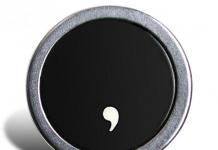Chernivtsi National University. Fedkovich (CNU) - additional information about the higher education institution
general information
Today there are 16 faculties at Chernivtsi National University:
- physical,
- engineering and technical,
- applied mathematics,
- computer sciences,
- chemical,
- biological,
- philological,
- foreign languages,
- historical,
- geographical,
- economic,
- pedagogical,
- legal,
- philosophical-theological,
- pre-university training,
- fine, decorative and applied arts.
More than 16 thousand students study at 71 departments of the Chernivtsi National University, and specialists are trained in 67 specialties. Educational and scientific work is provided by over 900 teachers, including almost 100 doctors of science, professors, about 500 candidates of science, associate professors; There are 6 specialized scientific councils for the defense of candidate and doctoral dissertations.
History of Chernivtsi National University
Chernivtsi National University was founded on October 4, 1875. by decree of the Emperor of Austria-Hungary Franz Joseph as part of the theological, philosophical and law faculties.
After the collapse of the Austro-Hungarian Empire in 1918. and the annexation of Northern Bukovina to the Romanian Kingdom by the university until 1940. was considered a Romanian institution of higher education.
In 1940 After the reunification of Northern Bukovina with Ukraine, the university was reorganized into a state higher education institution with Ukrainian as the language of instruction.
In 1989, Chernivtsi University was named after the outstanding Ukrainian writer of Bukovina, the harbinger of the Ukrainian national revival, Yuri Fedkovich.
In 2000, Chernivtsi State University named after Yuriy Fedkovich was granted national status.
Scientific work of Chernivtsi National University
The main directions of scientific research of Chernivtsi National University:
- theoretical and applied research in semiconductor materials science;
- development of new technologies, materials, microcircuits and devices for opto-, radio- and microelectronics, semiconductor instrumentation;
- static optics, holography;
- modular learning technologies;
- innovative technologies in business and education, problems of creative self-realization of the individual;
- environmental protection;
- ecology;
- geography;
- history of Ukraine, problems of language and literature.
Material and technical base of Chernivtsi National University
Chernivtsi National University has 14 academic buildings, a botanical garden, zoological and geological museums, a publishing house, and a library with a book collection of 2.5 million copies. The university has a department of military training.
The international cooperation
Teachers and students of Chernivtsi National University have the opportunity to take part in joint scientific programs that are carried out in accordance with agreements on creative cooperation with leading educational institutions and research centers in the USA, Canada, Austria, Germany, Poland, Romania, China, Yugoslavia, Israel and other countries.
In October 1999, Chernivtsi National University was admitted to honorary members of the International Organization of Universities "Phi Beta Delta" (USA).
There is a majestic ensemble - the Residence of the Metropolitans of Bukovina and Dalmatia, in the premises of which the Chernivtsi National University named after Yuri Fedkovich is now located. The elegant architectural structure is a symbol of tolerance of Bukovina and its inhabitants. This center of education and spirituality of the region was formed relatively recently. It was created by several generations of architects, masterfully embodying the architectural tastes of their time. At the same time, the Residence of Metropolitans is a kind of symbiosis of styles and cultures, which, intertwining with each other, created a unique harmonious union. The complex of buildings is an architectural monument and is included in the UNESCO World Heritage List.
Story
The residence of the metropolitans of Bukovina and Dalmatia has a glorious author. This is the Czech architect and philanthropist Josef Hlavka. A number of architectural masterpieces were built according to his designs in the Czech Republic and other European countries.
Although the Austrian authorities gave permission for the appearance of a cathedral and episcopal residence in Chernivtsi at the request of the local Orthodox nobility much earlier, they brought the plan to life only half a century later, with the appearance of Bishop Evgeniy Gakman.
In July 1864, the cathedral was consecrated, and on the site of the old residence, Bishop Hakman laid the “corner” (corner) stone for the foundation of the chapel of St. John of Suceava. This date is considered the beginning of the construction of a new residence.
In terms of scale, the construction had no analogues and cost astronomical money at that time - 1.75 million guilders.
After the Bukovina bishopric received metropolitan status in 1873, this building was given the name that has survived to this day - the Residence of the Metropolitans or the Metropolitan Residence.
Architecture
The complex of buildings of the Chernivtsi University looks like a medieval castle. Built in the spirit of eclecticism, it is a striking example of post-Romantic trends in architecture. High brick walls decorated with carved stone, slender towers, steep slopes of roofs with multi-colored tiles, reproducing designs of Bukovinian folk carpets - all this gives the ensemble sublimity and festivity.
Ensemble of the Metropolitan Residence
The ensemble consists of three monumental buildings-buildings, arranged in the form of the Cyrillic letter “P”, which form the front courtyard-court d’honneur. These are the Metropolitan, Seminary and Monastic buildings.
Metropolitan Corps
At the end of the main alley of the cour d'honneur there is the Palace of Bukovina Metropolitans. It is the dominant feature of the complex. Residential, administrative and representative premises were located here - spacious apartments for the bishop, luxurious halls for audiences and diocesan meetings. The office and consistory operated in this room.
The exterior of the Metropolitan Building is interesting in that it has a portico, the roof of which is the balcony of the Marble Hall. The architectural highlight is the dome rising above the eastern part of the roof. It has signs of the Gothic style, but at the same time looks like a minaret.
Among the main premises of the Palace:
- On the ground floor there is a large vestibule with massive pillars;
- Marble (Synodal) hall with gallery;
- Red Hall (“Meeting Hall of the Holy Synod”);
- Green Hall (metropolitan’s office);
- Blue Hall (former library).
Seminary building
To the left of the Metropolitan is the Seminary building. It was intended for educational purposes. The first floor of the building is the former “Greek-Orthodox Theological Faculty” of Chernivtsi University, the second is the “Theological Seminary”.
In the center of the building is the Synodal Church in honor of the Three Ecumenical Hierarchs - Basil the Great, Gregory the Theologian and John Chrysostom. On the right, the courtyard is bordered by a building with a tower and a clock, where there used to be a school of psalm-readers, an icon-painting school, a museum and premises for visitors.
Monastic building
The Monastery (or Guest Building) is located to the right of the main gate. This is a two-story rectangular building. The central axis of the building is formed by a multi-level square tower with a balcony and four clocks.
Here the crown with the “Stars of David” attracts attention. This is a kind of symbol of the continuity of Christianity from the biblical Old Testament tradition, common to Jews and Christians, as well as a sign of memory of the financial assistance provided to the Bukovinian Orthodox Metropolis by the Jewish community of Chernivtsi.
The ornament of the roof of the building resembles a Hutsul blanket - lizhnyk. The building is located so that in sunny weather its upper part plays with all its colors.
At various times there was a deacon's school, a diocesan museum, guest rooms, a candle making factory, and monastic cells here.
Arboretum
On the territory of the Yuriy Fedkovich Chernivtsi National University there is an arboretum with an area of about 5 hectares. It was planned at the same time as the residence. The best gardeners in Europe took care of the park.
Among the most interesting places in the arboretum:
- Natural playground with pyramidal thujas.
- Bronze bust of Joseph Hlavka.
- A nine-meter well, which used to contain mineral water.
- Spruce, the same age as the park.
- Fountains.
- Pond.
- Tulip tree.
- "Three-legged" apple tree.
- 130-year-old beech, the oldest tree in the park.
- Artificial stone grotto.
- After the construction of the Residence of Metropolitans, new names appeared in the toponymy of Chernivtsi: Road to the Episcopal Residence, Episcopal Street, Episcopal Mountain (formerly Domnik or Panskaya Mountain).
- To produce high-quality facing bricks, new factories were built and a number of stone quarries were opened. Natural stone from the Carpathians and the Dniester region was used in the decoration of facades and interiors.
- An attentive visitor will find parallels between the Metropolitan Residence and the Alcazar Palace in Spanish Granada.
- Thanks to the use of metal structures during several earthquakes, in particular the tragic Bucharest earthquake of 1977, the buildings of the Residence did not suffer a single crack.
- The residence of the Bukovinian metropolitans is a typical example of the so-called “brick style”, widespread in Western European architecture during the eclectic period.
- According to the results of the nationwide campaign “Seven Wonders of Ukraine: Castles, Fortresses, Palaces,” the Residence of Metropolitans entered the top seven.
How to get there
You can get to the Residence of the Metropolitans of Bukovyna (Chernivtsi National University named after Yuri Fedkovich) from the railway station by bus No. 23 to the stop “Stepan Bandera Street”, then by bus No. 5 or trolleybuses No. 1, 2, 4 to the stop “University”.
The distance from the station to the university is about one and a half kilometers. Walk along the streets of Gagarin, Khmelnitsky, Bohun, Shchepkin, Universitetskaya.
Working hours: daily from 10:00 to 17:00. Excursion groups are formed by prior appointment or directly on site. Visiting the halls is only allowed with a guide, but you can see the university church and park on your own.
Vladimir Dergachev, photos by Anton Dergachev
http://os1.i.ua/3/7/9506229_4a8882d2.jpg
Among the architectural monuments of Chernivtsi, a special place is occupied by the architectural ensemble of the former Residence of the Orthodox Metropolitans of Bukovina and Dalmatia (1864-1882), included in the UNESCO World Cultural Heritage Sites (2011). Currently, the former residence houses the Yuriy Fedkovich Chernivtsi National University.
The initiative to build the Residence belonged to Bishop Evgeniy Gakman. Rusin by nationality, he directed a lot of efforts to support the Orthodox faith and the creation of the Bukovinian metropolis. Back in 1863, he obtained permission from the Austrian Kaiser Franz Joseph I to build a new residence worthy of the capital of Bukovina.
The main funding came from the Bukovinian Orthodox Religious Foundation with the support of the Austrian authorities and other faiths. A crown of “Stars of David” on the tower of one of the ensemble buildings became a kind of gratitude for the contribution of the Jewish denomination. The total cost of construction was about 2 million gold florins.
The project of an architectural ensemble in the spirit of eclecticism with a predominance of elements of Byzantine and Romanesque styles was carried out by a famous Czech scientist, architect, academician Joseph Hlavka. Under his leadership, exploration of local construction resources began, ceramic and brick factories began operating, and local craftsmen were trained in the craft of masons. The quality of each brick was checked by dropping it from a twenty-meter height. To strengthen the masonry, chicken eggs were added to the mortar.
Famous Austrian, Czech and Bukovinian artists took part in the decoration of the buildings.
The project repeatedly won prizes in international competitions and was awarded the Second Prize for Architecture at the Paris World Exhibition in 1867. The composition of the ensemble consists of three monumental buildings: the main building, the theological seminary together with the Church of the Three Saints, and the presbytery.
The residence of the Bukovina Metropolitan was built in 1854 - 1862, and the main building - in 1864 - 1876. 
Chernivtsi National University named after Yuriy Fedkovich founded in 1875 on the basis of a theological seminary consisting of three faculties: theological, legal and philosophical. During the period when the territory became part of the Austro-Hungarian Empire until 1918, teaching was conducted in German.
The university is named after the Ukrainian writer, a harbinger of the Ukrainian national revival in Bukovina Osip-Yuri Fedkovich(1834, Putyla -1888, Chernivtsi). He was born in Austria-Hungary into the family of a poor employee. He studied at the Chernivtsi German Real School, later worked in Moldova, served in Transylvania, and with the rank of lieutenant participated in a campaign in Italy, during which he wrote his first poem in Ukrainian (previously he wrote in German). He worked in Lvov as an editor for the Prosveshchenie publishing house and the Russian Beseda theater. He spent his last years in Chernivtsi, where in 1885-1888 he was editor of the newspaper Bukovina. For services in the literary field, he was elected an honorary member of the Scientific Society named after. Taras Shevchenko.
After the transition of Bukovina to Romania in 1918, Chernivtsi University in 1920 was transformed into the Romanian University named after Carol I. In 1940, after the annexation of Northern Bukovina to the Ukrainian SSR, Chernivtsi University became state (with 7 faculties), with teaching in Ukrainian.
The main building of the university was built under the Romanian administration (1920 - 1922). On the historical territory of the residence of the metropolitans there are three educational buildings and the active Church of the Three Saints.
About 19 thousand students study in 12 institutes and faculties, including biology and chemistry, geographical, economic, physical, technical and computer sciences, foreign languages, history, political science and international relations, applied mathematics, pedagogy and psychology, philology, law, physical, cultural and human health.
Ivan Franko studied at the university in 1892 for one semester, who translated into Ukrainian the work of Friedrich Engels “The Development of Socialism from Utopia to Science,” published in a local printing house.
Pompous entrance gate 

The Cathedral of the Three Ecumenical Hierarchs (Basily the Great, Gregory the Theologian and John Chrysostom) and the former theological seminary, in the building of which the philosophical and theological faculty of the university is located. 
The cathedral has belonged to the Ukrainian Orthodox Church (Kiev Patriarchate) since 1990. The Cathedral of the Chernivtsi-Bukovina Diocese of the Ukrainian Orthodox Church (Moscow Patriarchate) is located elsewhere in the city. 



The central building is the former palace of the Metropolitans, which has seen many high-ranking guests in its lifetime. The building is famous for its luxurious halls - Synodal (or Marble), Blue (former Metropolitan Library), Green (University Rector's office). 

The living room (monastery) building with a graceful tower in the center, where a cross solemnly rises above the clock, as a symbol of the irreversibility of time. In the past, the presbytery housed monastery cells, a school of deacons, a printing house and a small candle factory. Today the university's geography department is located here. 
Marble Hall (university assembly hall) 
http://i1.wp.com/vidviday.ua/blog/wp-content/uploads/2016/01/marmurova-zala_1000x681.jpg?w=1000





Corridors of the former Metropolitan Court 

In the spacious hall on the first floor of the main building there are statues, including women with magnificent breasts, but without a head. This is one of the copies of the statue, which in the past decorated the Cathedral Square of Chernivtsi and symbolized Austria (at that time all parts of the body were in place). University superstition says that if you hold “Austria” by the chest, you will be lucky in the exam session. I don’t know how lucky the students are, but their chests are thoroughly stained. 
Simultaneously with the residence of the metropolitans, a unique arboretum in landscape style was created. The entrance to the park is a platform with pyramidal thujas, in the center of which there is a bronze bust Josef Hlavka(1831 - 1908). His construction company completed about 140 orders in Vienna, including the construction of the Vienna Opera building. Behind the monument there is a nine-meter well with mineral water, which dried up in the 1970s.
Along with exotic tree species in the park there are maples, oaks, lindens, and hornbeams; Weeping willows, magnolia and catalpa also grow. They create a continuous protective strip along the perimeter of the park, ensuring its complete isolation and a feeling of absolute peace. 
Lecture for excusers 
A memorial plaque on the facade of the Faculty of Applied Mathematics is dedicated to the memory of Nikolai Nikolaevich Bogolyubov(1909, Nizhny Novgorod - 1992, Moscow) - Soviet mathematician and theoretical physicist, academician of the Academy of Sciences of the Ukrainian SSR (1948) and the Academy of Sciences of the USSR (1953), founder of scientific schools in nonlinear mechanics and theoretical physics, twice Hero of Socialist Labor.
Since 1929, Bogolyubov worked at the Ukrainian Academy of Sciences and at Kiev University (1936 - 1940). After the reunification of the Northern Side with the Ukrainian SSR, he was sent to Chernivtsi University to organize mathematical departments at the Faculty of Physics and Mathematics.
Since 1944 - head of the department of mathematical physics at Kyiv University. In 1950, he began working at the V. A. Steklov Mathematical Institute and M. V. Lomonosov Moscow State University. At the same time, he took part in the Atomic Project, from 1950 to 1953 he headed the mathematical department in Arzamas-16.
Since 1956 - Director of the Laboratory of Theoretical Physics of the Joint Institute for Nuclear Research (JINR) in Dubna. In the period 1965-1973 - Director of the Institute of Theoretical Physics of the Academy of Sciences of Ukraine, then until 1988 - Director of JINR, Head of the Department of Quantum Statistics and Field Theory of the Faculty of Physics of Moscow State University until 1992. 
Faculty of Law of Chernivtsi University 
Higher education in Chernivtsi is represented, in addition to the Chernivtsi National University, by the Bukovinian State Medical University, the Bukovinian State University of Finance and Economics and other universities and branches.
A branch of the Odessa National Law Academy has been established in Chernivtsi. 
Areas of training
Chernivtsi National University. Fedkovicha (ChNU) conducts bachelor training in the following areas:
- Biotechnology;
- Geodesy and land management;
- Humanitarian sciences;
- Natural Sciences;
- Journalism and information;
- Publishing and printing;
- Informatics and Computer Science;
- Information Security;
- Art;
- Culture;
- International relationships;
- Management and administration;
- Metrology, measuring equipment and information-measuring technologies;
- Teacher Education;
- Right;
- Radio engineering, radio-electronic devices and communications;
- Agriculture and forestry;
- System Sciences and Cybernetics;
- Social and political sciences;
- Construction and architecture;
- Service sector;
- Physical and mathematical sciences;
- Physical education, sports and human health;
- Economics and Entrepreneurship;
- Electronics;
- Electrical engineering and electromechanics.
SPECIALTIES IN THE BIOTECHNOLOGY DIRECTION
- Biotechnology
Competitive subjects: 1. Ukrainian language and literature. 2. Chemistry. 3. Biology or mathematics*.
SPECIALTIES IN THE DIRECTION "GEODESY AND LAND DEVELOPMENT"
- Geodesy, cartography and land management
Competitive subjects: 1. Ukrainian language and literature. 2. Geography. 3. History of Ukraine or mathematics*.
SPECIALTIES IN THE DIRECTION "HUMANITIES"
- Story
- Philology
Competitive subjects: 1. Ukrainian language and literature. 2. Foreign language or Russian language (according to profile). 3. History of Ukraine*; - Philosophy
SPECIALTIES IN THE DIRECTION "NATURAL SCIENCES"
- Biology
Competitive subjects: 1. Ukrainian language and literature. 2. Biology. 3. Physics or chemistry*; - Geography
Competitive subjects: 1. Ukrainian language and literature. 2. Geography. 3. History of Ukraine or mathematics*; - Hydrometeorology
Competitive subjects: 1. Ukrainian language and literature. 2. Geography. 3. Mathematics or physics*; - Chemistry
Competitive subjects: 1. Ukrainian language and literature. 2. Chemistry. 3. Physics or mathematics*; - Ecology, environmental protection and balanced use of natural resources
Competitive subjects: 1. Ukrainian language and literature. 2. Mathematics. 3. Chemistry or geography*.
SPECIALTIES IN THE DIRECTION "JOURNALISM AND INFORMATION"
- Journalism
Competitive subjects: 1. Ukrainian language and literature. 2. Foreign language or Russian language. 3. Creative competition*; - Publishing and editing
SPECIALTIES IN THE DIRECTION "PUBLISHING AND PRINTING BUSINESS"
- Publishing and printing business
SPECIALTIES IN THE DIRECTION "INFORMATICS AND COMPUTER ENGINEERING"
- Computer engineering
- Software Engineering
SPECIALTIES IN THE DIRECTION "INFORMATION SECURITY"
- Technical information security systems
Competitive subjects: 1. Ukrainian language and literature. 2. Mathematics. 3. Physics or foreign language*.
SPECIALTIES IN THE "ART" DIRECTION
- Arts and crafts
Competitive subjects: 1. Ukrainian language and literature. 2. History of Ukraine. 3. Creative competition*; - Musical art
Competitive subjects: 1. Ukrainian language and literature. 2. History of Ukraine. 3. Creative competition*.
SPECIALTIES IN THE "CULTURE" DIRECTION
- Cultural studies
Competitive subjects: 1. Ukrainian language and literature. 2. History of Ukraine. 3. Foreign language or geography*.
SPECIALTIES OF THE DIRECTION "INTERNATIONAL RELATIONS"
- International information
Competitive subjects: 1. Ukrainian language and literature. 2. Foreign language. 3. World history or mathematics*; - Regional studies
Competitive subjects: 1. Ukrainian language and literature. 2. Geography. 3. World history or foreign language*.
SPECIALTIES IN THE DIRECTION "MANAGEMENT AND ADMINISTRATION"
- Management
Competitive subjects: 1. Ukrainian language and literature. 2. Mathematics. 3. Geography or foreign language*.
SPECIALTIES IN THE DIRECTION "METROLOGY, MEASURING ENGINEERING AND INFORMATION-MEASURING TECHNOLOGIES"
- Optotechnics
SPECIALTIES IN THE DIRECTION "TEDAGOGICAL EDUCATION"
- Preschool education
Competitive subjects: 1. Ukrainian language and literature. 2. Biology. 3. Mathematics or history of Ukraine*; - Elementary education
Competitive subjects: 1. Ukrainian language and literature. 2. Mathematics. 3. Biology or history of Ukraine*; - Professional education (by profile)
- Social pedagogy
Competitive subjects: 1. Ukrainian language and literature. 2. History of Ukraine. 3. Foreign language or biology*; - Technology education
Competitive subjects: 1. Ukrainian language and literature. 2. Mathematics. 3. Physics or chemistry*.
SPECIALTIES OF THE DIRECTION "LAW"
- Jurisprudence
Competitive subjects: 1. Ukrainian language and literature. 2. History of Ukraine. 3. Foreign language or mathematics*.
SPECIALTIES IN THE DIRECTION "RADIO ENGINEERING, RADIO ELECTRONIC EQUIPMENT AND COMMUNICATIONS"
- Radio engineering
Competitive subjects: 1. Ukrainian language and literature. 2. Physics. 3. Mathematics or foreign language*; - Telecommunications
Competitive subjects: 1. Ukrainian language and literature. 2. Mathematics. 3. Physics or foreign language*.
SPECIALTIES IN THE DIRECTION "AGRICULTURE AND FORESTRY"
- Agronomy
Competitive subjects: 1. Ukrainian language and literature. 2. Biology. 3. Chemistry or mathematics*.
SPECIALTIES IN THE DIRECTION "SYSTEM SCIENCES AND CYBERNETICS"
- Computer science
Competitive subjects: 1. Ukrainian language and literature. 2. Mathematics. 3. Physics or foreign language*; - Applied Mathematics
Competitive subjects: 1. Ukrainian language and literature. 2. Mathematics. 3. Physics or foreign language*; - System analysis
Competitive subjects: 1. Ukrainian language and literature. 2. Mathematics. 3. Physics or foreign language*.
SPECIALTIES OF THE DIRECTION "SOCIAL AND POLITICAL SCIENCES"
- Political science
Competitive subjects: 1. Ukrainian language and literature. 2. History of Ukraine. 3. World history or foreign language*; - Practical psychology
- Psychology
Competitive subjects: 1. Ukrainian language and literature. 2. Biology. 3. History of Ukraine or foreign language*; - Sociology
Competitive subjects: 1. Ukrainian language and literature. 2. History of Ukraine. 3. Mathematics or foreign language*.
SPECIALTIES IN THE DIRECTION "CONSTRUCTION AND ARCHITECTURE"
- Architecture
Competitive subjects: 1. Ukrainian language and literature. 2. Mathematics. 3. Creative competition*; - Hydraulic engineering (water resources)
Competitive subjects: 1. Ukrainian language and literature. 2. Mathematics. 3. Physics or chemistry*; - Construction
Competitive subjects: 1. Ukrainian language and literature. 2. Mathematics. 3. Physics or chemistry*.
SPECIALTIES IN THE "SERVICE SECTOR" DIRECTION
- Tourism
Competitive subjects: 1. Ukrainian language and literature. 2. Geography. 3. History of Ukraine or foreign language*.
SPECIALTIES IN THE DIRECTION "PHYSICAL AND MATHEMATICAL SCIENCES"
- Mathematics
Competitive subjects: 1. Ukrainian language and literature. 2. Mathematics. 3. Physics or foreign language*; - applied Physics
- Physics
Competitive subjects: 1. Ukrainian language and literature. 2. Physics. 3. Mathematics or chemistry*.
SPECIALTIES IN THE DIRECTION "PHYSICAL EDUCATION, SPORTS AND HUMAN HEALTH"
- Human health
Competitive subjects: 1. Ukrainian language and literature. 2. Biology. 3. Creative competition*; - Physical education
Competitive subjects: 1. Ukrainian language and literature. 2. Biology. 3. Creative competition*.
SPECIALTIES OF THE DIRECTION "ECONOMICS AND ENTREPRENEURSHIP"
- Marketing
- International economics
Competitive subjects: 1. Ukrainian language and literature. 2. Mathematics. 3. Foreign language or geography*; - Accounting and Auditing
Competitive subjects: 1. Ukrainian language and literature. 2. Mathematics. 3. History of Ukraine or geography*; - Finance and credit
Competitive subjects: 1. Ukrainian language and literature. 2. Mathematics. 3. History of Ukraine or geography*; - Enterprise economy
Competitive subjects: 1. Ukrainian language and literature. 2. Mathematics. 3. History of Ukraine or geography*; - Economic cybernetics
Competitive subjects: 1. Ukrainian language and literature. 2. Mathematics. 3. History of Ukraine or geography*.
SPECIALTIES IN THE "ELECTRONICS" DIRECTION
- Micro- and nanoelectronics
Competitive subjects: 1. Ukrainian language and literature. 2. Physics. 3. Mathematics or chemistry*; - Electronic devices and systems
Competitive subjects: 1. Ukrainian language and literature. 2. Physics. 3. Mathematics or chemistry*.
SPECIALTIES IN THE DIRECTION "ELECTRICAL ENGINEERING AND ELECTROMECHANICS"
- Electrical engineering and electrical technology
Competitive subjects: 1. Ukrainian language and literature. 2. Mathematics. 3. Physics or chemistry*.
They say that if you visited the capital of Bukovina, walked through all its streets and squares, but did not visit the former residence of the Bukovina metropolitans, you have no right to say that you recognized Chernivtsi. Any resident of this cozy and clean city will tell you about this. And those who once studied within these ancient walls are even more sure of this. Yes, that’s right, now buildings are located on the site of the former residence Chernivtsi State University named after Yuriy Fedkovich.
The fabulous story of the creation of the university
During the existence of the Austro-Hungarian Empire, Bukovina, which was part of it, was considered its most remote and backward province. The Austrians contemptuously called it “the bear’s corner.” Therefore, the history of the creation in this city of one of the largest and most modern universities in Europe is like a fairy tale. Indeed, along with Chernivtsi, the cities of Prague, Salzburg and the port city of Trieste fought for the right to have a national university on their territory. However, the choice fell on Chernivtsi. And the credit for this belongs to the outstanding church and public figure of that time Bukovina Metropolitan Evgeniy Gakman.
Evgeny Gakman himself was of low origin, he came from Bukovinian peasants, and received his primary education thanks to the efforts of his uncle, who, as a monk, taught the Word of God in Chernivtsi schools. It was thanks to his uncle’s science and Eugene’s natural gift that he became the only Ukrainian at that time who continued his education within the walls of one of the most prestigious universities - Vienna. At that time, representatives of all Christian denominations studied at its theological faculty: Orthodox, Catholics and Protestants.
In those days, Emperor Franz I of Austria-Hungary practiced the annual reception of the best students of the University of Vienna. At one of these audiences, he met and remembered a smart and gifted boy from a remote outback. After a conversation with him, the emperor offered him a position as a court teacher of the Romanian language for the young heir to the throne, Archduke Ferdinand. Now it becomes clear that the former student, when he took the royal throne, always supported the initiatives and progressive ideas of his teacher, who in 1835 was appointed Bishop of Bukovina by him.
However, this is not quite true. The outstanding mind of Evgeniy Gakman, who headed the Bukovina Sejm for several years in a row, suggested and convinced the emperor that the project for the construction of the Chernivtsi university would be the most inexpensive and least burdensome for the imperial treasury. At that time, the theological faculty of the university was already functioning in the city, and the Bishop of Bukovina assured the emperor that while new buildings were being built, theology students would kindly accommodate students from other faculties within their walls. And, in addition, the theological faculty itself is funded by the Orthodox community of Chernivtsi. And yet, if the emperor agrees to meet the wishes of the Bukovinians, the city will build a beautiful botanical garden on its own and allocate free space for the construction of new university buildings. After such convincing arguments, the new Emperor Franz Joseph I had only to sign on March 31, 1875 the decree on the founding Chernivtsi University.
Franz Joseph I himself was expected to attend the grand opening of the university, but government affairs prevented him from arriving, and the ceremonial event was held by his minister K. von Stremeier.
Architectural masterpiece by Joseph Hlavka
Now let's return to our time and take a look at the main building of the university, where the residence of the Metropolitan was previously located.
The fact is that previously the building of the old episcopal residence was located on this very spot. However, in 1873, Yevgeny Gakman managed to achieve complete autonomy of the Bukovinian Orthodox Church, and then work began on the construction of a new residence where the new Bukovinian Metropolitan could work and relax. The development of the project and the creation of the new building were entrusted to a young Czech architect, a graduate of the Vienna Academy of Arts, Joseph Hlavka, who was only 29 years old at that time. In 1860, the project was approved and even received second prize at the world architectural exhibition in Paris. And in 1863, full-scale construction work began.
In order to provide the construction with the necessary amount of building material, several quarries were dug in the suburbs of Chernivtsi, and two brick factories and one ceramics factory were built in the city itself. In addition, a school was organized to improve the skills of builders.
For Austria-Hungary these were events of unprecedented scale. For almost 18 years, Joseph Glavka built his masterpiece, and he was assisted in this by the most outstanding master architects of that time. The execution of the facing work was entrusted to the Viennese artists K. Jobst, I. Klein, Czech K. Svoboda, Bukovinians E. Buchevsky and E. Maksimovich. Artistic stone carving and stucco were created under the direction of the sculptor from Vienna K. Hoffmann.
The residence was built thoroughly and carefully. Suffice it to say that each brick was tested separately for its acoustic qualities. The slightest flaws led to the rejection of the material. To increase the strength of the solution, organic matter from animal corpses and chicken eggs were added to it. Masonry made in this way can last for centuries.
The construction itself consisted of three tasks. On the left were classrooms, a library, sleeping quarters for theologians, and a seminary church. In the center was the actual residence of the Metropolitan. On the right was the building of a school of deacons, a monastery, a museum and a candle factory.
Unfortunately, the architect himself was not able to see his brilliant creation in its finished form. Having undermined his strength and health during construction, Joseph Glavka died in 1882 after a serious illness.
His masterpiece embodies the true spirit of Bukovina, on whose territory many peoples lived, each with their own unique traditions and cultures. Therefore, the metropolitan residence embodied a mixed architectural style, a fusion of many trends and cultures in architecture. In it you can find echoes of the medieval styles of knightly castles and the Moorish direction in Spanish architecture, Byzantine and Romanesque notes. And the traditional ornaments on the tiled roofs are made in the typical Bukovinian style. There is no doubt about the Hutsul roots in the wooden carvings of the ceilings of the internal halls. All together they create indescribable harmony and beauty.
Treasures of the Metropolitan Residence
If you carefully examine the architectural features of the residence buildings, you may come across amazing things. For example, why is the dome of the deacon school tower decorated with typically Jewish Stars of David? And this is explained quite simply. The Orthodox community of Chernivtsi was not immediately able to raise the sum of money (about 1,830,000 gold florins) needed for the construction of the metropolitan residence. And Jewish organizations helped her with this. Thus, the memory of this event was perpetuated. For a similar reason, a three-dimensional cross was built on the dome of the Metropolitan Church building, which is oriented in two directions - to the west and to the east. Thus, tolerance in relations between followers of various religious movements living in Bukovina was once again confirmed.
By the way, once upon a time the clock placed on the tower of the deacon's school showed not only local time, but also London or Vienna.
If you walk through the corridors of the university, you can be amazed at the perfection and skill of the ancient architects. The marble floor amazes with its ornaments made in the Greek style, wall paintings and ceiling vaults elevate thoughts and feelings to the lofty. And what can we say about the interior decoration of the state rooms! What a pity that one of the most beautiful in Europe Marble Hall(once it was called Synodal), died during a terrible fire that happened in 1944. Along with him, the Synodal library with many unique archival materials disappeared in the flames.
The current interior of this hall is only an approximate copy of the Synodal Hall, which was made by modern restorers. However, the luxurious one-and-a-half-ton crystal chandeliers, unique wall frescoes by Karl Svoboda illuminating the history of the Bukovinian church, as well as the marble floor will never be restored. All that was saved were small fragments of the marble floor. And the luxurious columns made of marble are just a successful imitation of alabaster.
However, miraculously the fire did not touch Meeting room of the Holy Synod(now it is called Red Hall). Entering this room, you cannot get rid of the feeling that you are inside a wonderful carved box, draped with the finest Chinese red silk. Under your feet there is a wonderful parquet made of expensive wood: red beech, green linden and oak. And the huge Venetian mirrors on the walls expand the space and make the soul soar above the mortal earth.
An old legend says that if a woman looks into these mirrors, she will be able to regain her youth, and a man will erase traces of many old sins from his soul.
In order to make sure that the mirrors are really Venetian, just look through them at the flame of a candle or lighter. You will immediately notice five reflections. This is exactly how many layers of silver were applied to the back surface of the mirror by ancient craftsmen. A wonderful painted ceiling stretches above the visitor's head.
Church of the Three Saints
In the very center of the Seminary building, a majestic building has been miraculously preserved Church of the Three Saints. Nowadays, few people believe that from the middle of the last century until recently, an electronic computing center was located within its walls. You understand that back then computers had significant dimensions. After some time, the premises were given over to the university museum. And since 1991, the temple again opened its arms to numerous believers.
Experts say that the Temple has the best acoustic data among the premises in Ukraine. University students are active parishioners of the church and choose the main shrine of their university to perpetuate the most significant events in their lives. Wedding and Christening ceremonies often take place here. There is a particularly large influx of parishioners during test and examination periods.
The modern university also has some ancient traditions. For example, you cannot smoke on its territory, and you cannot walk along the gravel path leading to the main building. It turns out that under this path there is a complex drainage system that maintains optimal humidity conditions in the structure and protects it from destruction. And, besides, the city gallows for criminals once stood on this site. And it was here that the unfortunate animals were killed, whose corpses were added to the cement mortar during the construction of the university.
Nowadays, the buildings of the former residence house the geographical, philological, philosophical and theological faculties and the faculty of foreign languages.
Behind the majestic residence is a cozy and quiet University Park, which was created in parallel with the residence buildings. Although most of the green spaces have not been preserved since then, the general park architecture and landscape have reached us unchanged. The same unchanged decorative pond with a grotto in the center of the park. In front of the facade of the main building there is a bronze bust of the architect I. Glavka framed by fountains.
In June, the tulip tree blooms here in lush colors, and pyramidal thujas rush into the blue sky like green candles. In addition to them, in the park you will find other rare tree species, such as cork, red beech, magnolias, catalpas, ash and others. One of the attractions of the park is its ancient tree, 130 year old beech. And once upon a time, the Metropolitan quenched his thirst with mineral water from a deep park well, which, after ineptly carried out drainage work in 1970, dried up forever.
They say that the park was once inhabited by peacocks, swans and roe deer, and the green spaces were looked after by experienced gardeners, all of whom had higher education. Now you will only see fast squirrels and wise owls here. However, modern witnesses of the former greatness of the residence of the Bukovinian Metropolitans still like to sit in the shade of the cozy corners of the park with a book.


















